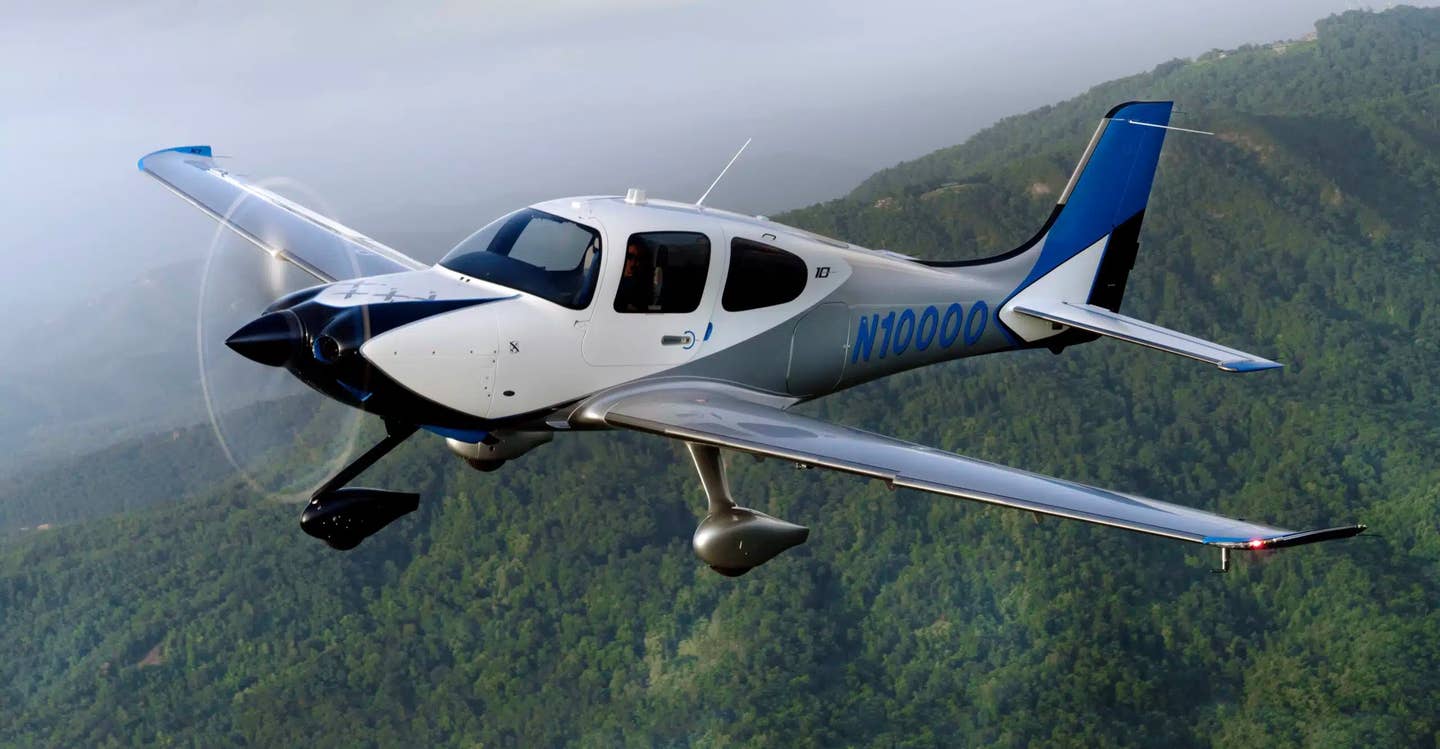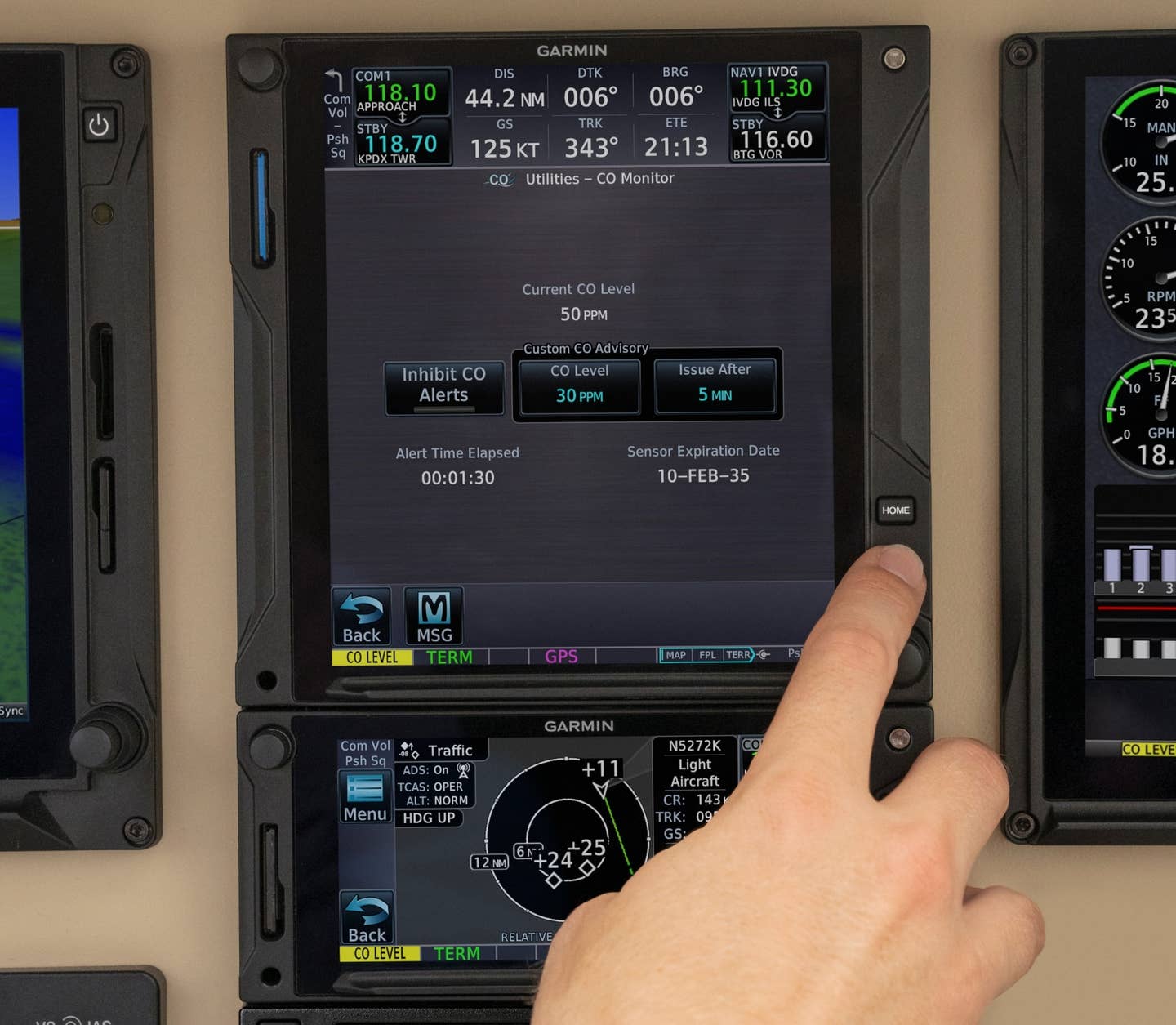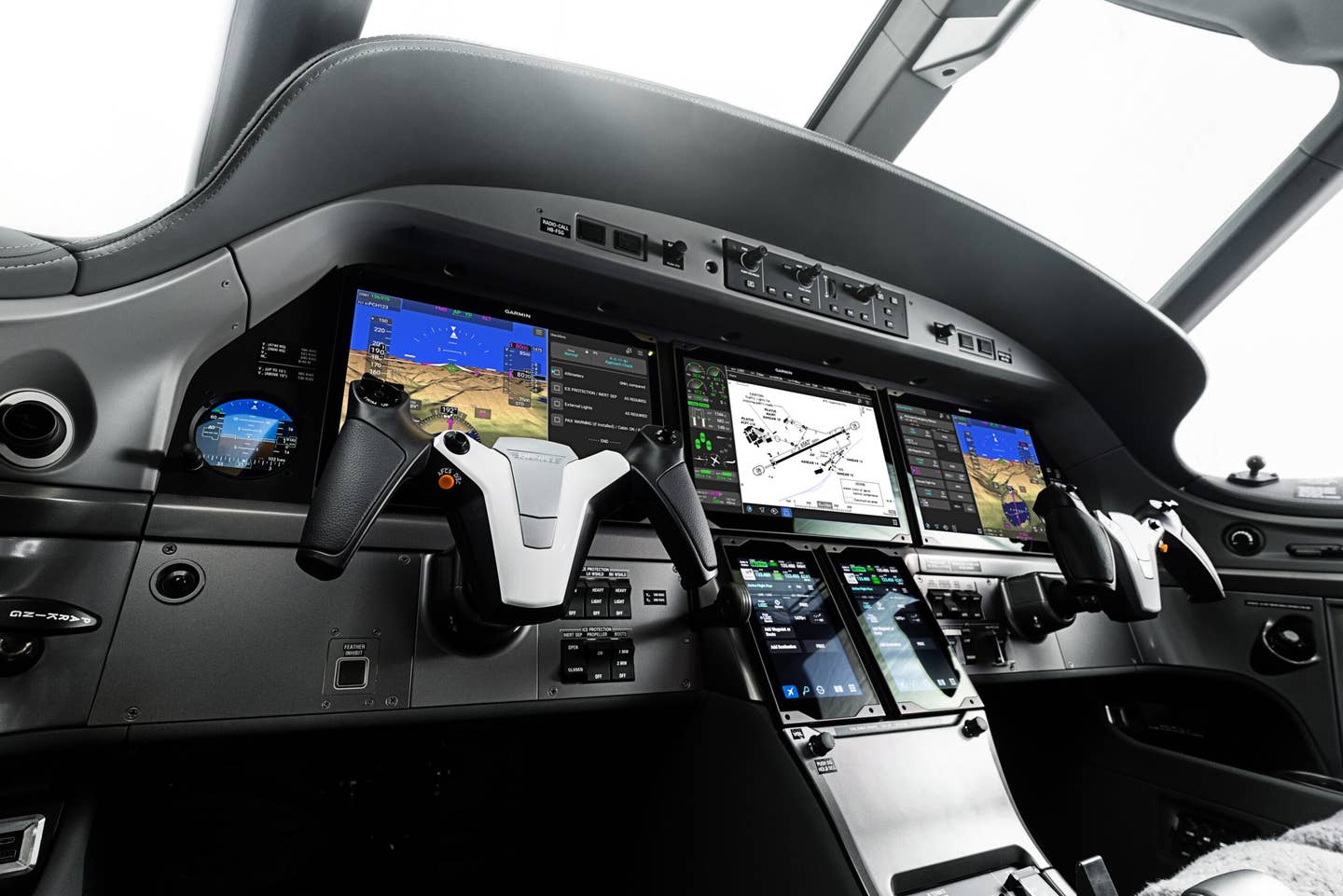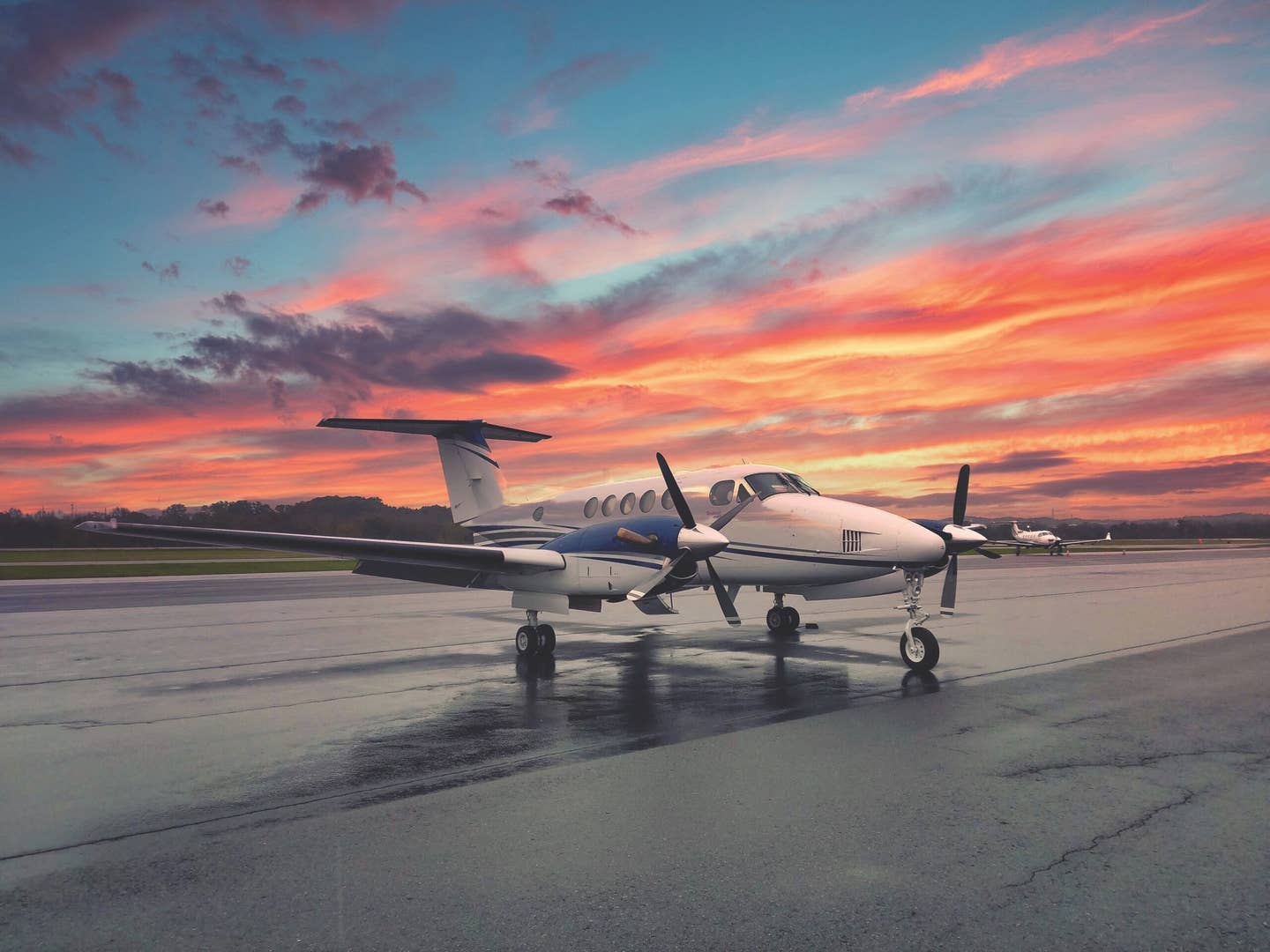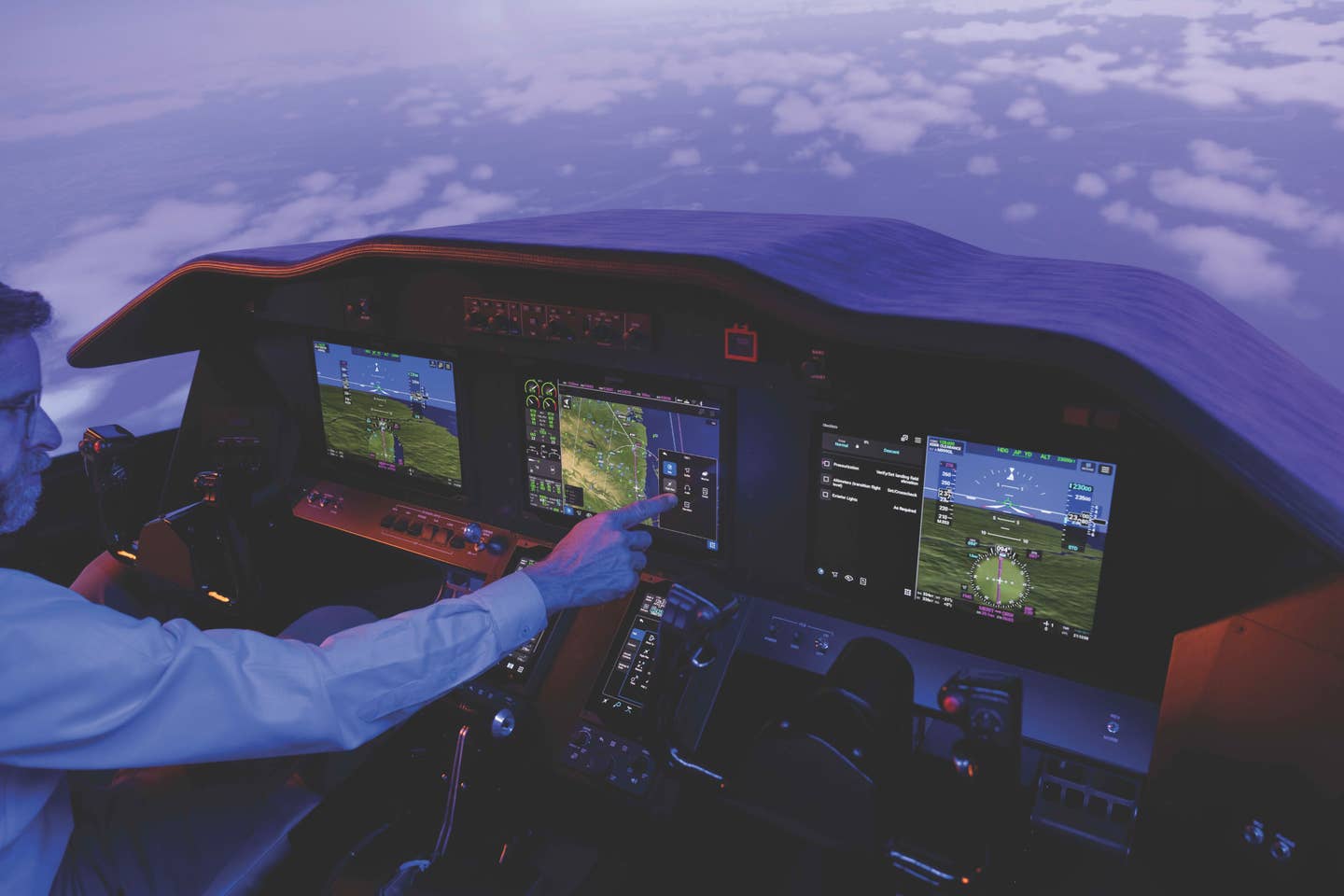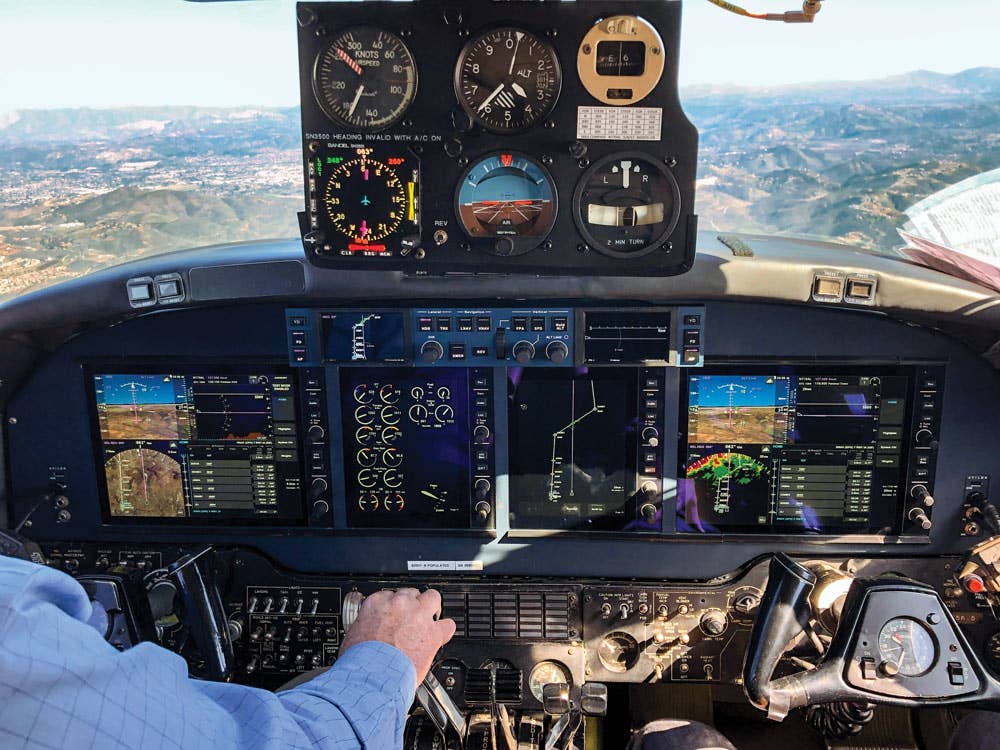
For flight test purposes, the King Air required an experimental avionics panel above Sandel’s Avilon system. Pia Bergqvist
Since glass displays first emerged in general aviation cockpits, most systems have been designed with one stand-alone primary flight display and a separate multifunction display. Some displays have been split in two, having a smaller PFD on one half and an MFD on the other. When introducing its new Avilon system, Sandel Avionics chose a different route. Its main display combines several boxes, keeping more information in the pilot's field of view.
Sandel was started more than 20 years ago by Gerry Block, a passionate aviator who has spent his career developing electronic equipment in various industries. The name Sandel combines the names of his children: Sandy and Elliot, and the company is best known for its forward-looking TAWS product lines and electronic-navigation displays.
The company is based in Vista, California, approximately 15 minutes from the McClellan-Palomar Airport (KCRQ).
To bring Avilon to the market as a revolutionary system, Block solicited two friends: Delmar McLean Fadden, a former U.S. Air Force pilot and long-time Boeing avionics engineer; and former Boeing test pilot, the late Richard "Dick" Taylor.
When developing the system, Bruce Croft, manager of Avilon Technical Documentation, said the goal was for a pilot to be able to learn its operation quickly by making it intuitive. After playing around in the company’s simulator and a King Air 200 used for the STC development, I felt that goal was achieved.
Avilon’s shallow menus are intuitive. Most functions can be accessed right in front of the pilot’s face, providing the head-up, face-forward position that prevents spatial disorientation.
There is one 12.1-inch screen in front of each pilot’s seat and two 8.4-inch screens in the center, which are mostly used for systems information, but can be tapped for other functions. A path-guidance display is located on the top of the panel. It includes autopilot functions and two small screens that provide vertical and horizontal guidance. Those screens also can serve as backup instruments.
While the frames have dual concentric knobs and soft keys, the system also can be manipulated with touch screens. On-screen “buttons” are large to minimize undesired selections, and a function is not activated until the finger leaves the screen. So you can touch a button, then slide the finger off of it if you change your mind.
Avilon shows primary flight data, with synthetic vision, at the top left corner of the main screen and horizontal-situation data below. Aside from the configuration, what truly sets Avilon apart is its imagery. It is not the pixelated synvis that I’ve seen in other products. It is a crisp satellite picture. I flew along in the King Air out of KCRQ on a magnificent winter day, and my eyes were still drawn to the synthetic-vision imagery on the screens.
Read More: How a Primary Flight Display Works
The flight plan can be shown alongside the navigation screen. Initially, I felt that the flight plan was shown in reverse, with the destination at the top of the list and the current position on the bottom. But, when considering that the flight path stays ahead of the airplane on the navigation screen, the flight-plan order makes perfect sense. On the top right, the vertical-situation display shows the terrain below your actual flight-planned route rather than the direct flight path.
Sandel also took a different approach to the use of colors on its displays to give the pilot a quicker sense of active and selectable functions, and what the airplane is currently doing.
Unlike many systems with dual PFDs, Avilon does not only have left and right data sources for redundancy. The system continuously monitors and compares data from several sources and chooses the best one for both PFDs. Additional redundancy built into Avilon includes three AHRS and ADCs, and dual autopilot/flight director computers, dual FMS, dual WAAS GPS and more.
Avilon stays ahead of the future with full performance-based navigation (PBN) capability, providing access to more than 9,300 PBN procedures around the country.
Sandel’s technicians removed 170 pounds of avionics equipment and installed 85 pounds of new gear, allowing King Air operators to bring along a small person instead of all the old boxes and wires. The number of connectors have been reduced by about 80 percent, said Fadden. That and the connector design minimize potential failures.
To decrease installation time, Avilon works with some existing systems, such as autopilot components. The expected installation time is about 150 hours versus around 1,000 hours for some avionics systems, Croft said.
The cost for the complete installation is expected to be around $175,000. The STC will initially apply to the King Air, with other turbine aircraft to follow.

Sign-up for newsletters & special offers!
Get the latest FLYING stories & special offers delivered directly to your inbox

